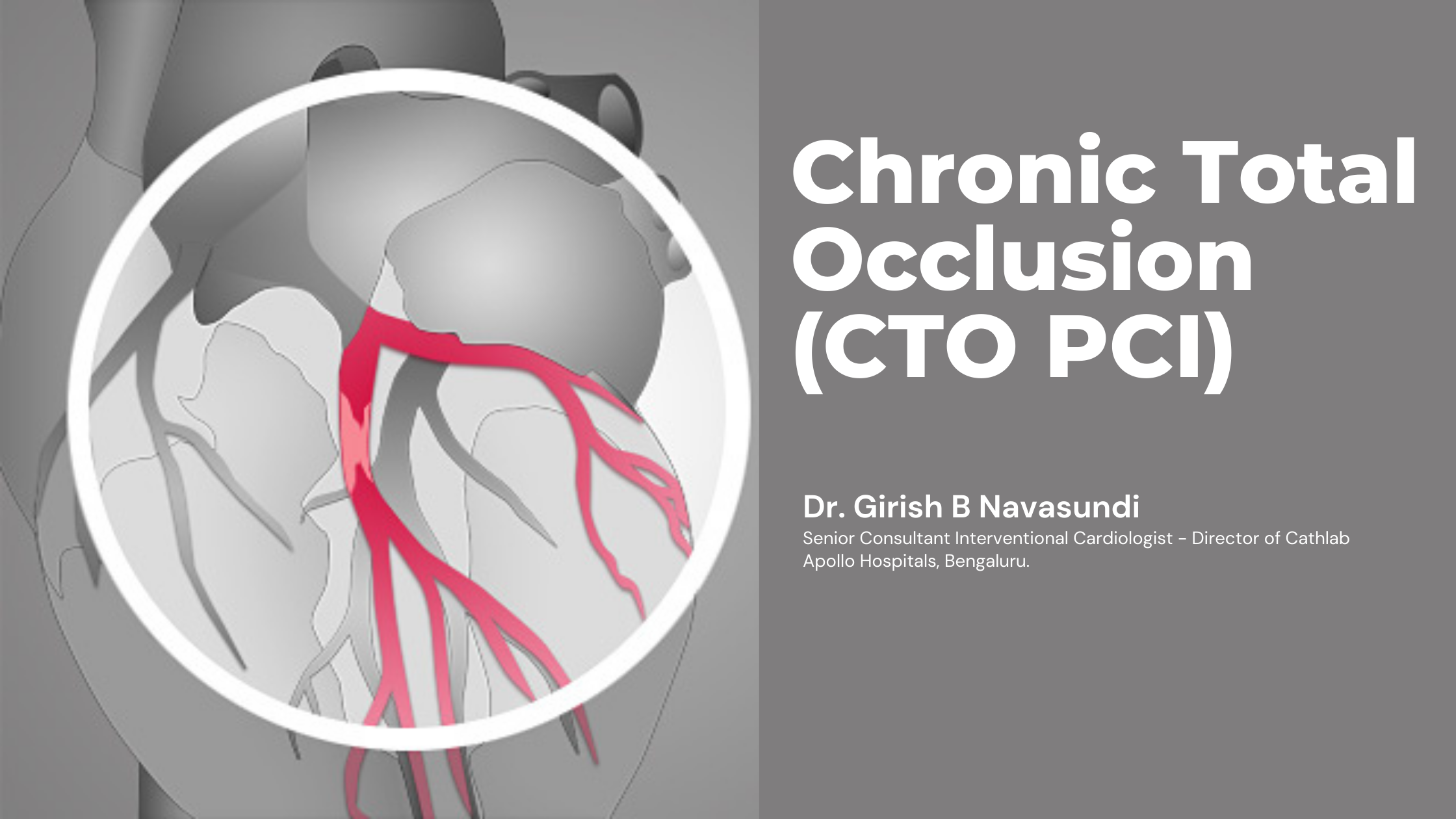 Posted on April 15, 2024
Posted on April 15, 2024
Revolutionizing Cardiac Care: Chronic Total Occlusion PCI
In the realm of cardiac healthcare, Chronic Total Occlusion Percutaneous Coronary Intervention (CTO PCI) is emerging as a pivotal treatment for patients with severe arterial blockages. At the helm of this innovative technique is a distinguished figure in interventional cardiology. This blog post explores the essentials of CTO PCI, its effectiveness, and how expert guidance is shaping the future of cardiac treatments.
What is Chronic Total Occlusion (CTO)?
Chronic Total Occlusions are severe blockages in the coronary arteries, characterized by heavy plaque accumulation that completely obstructs blood flow. These blockages are typically longstanding, often existing for several months, which can significantly impair heart function and lead to debilitating symptoms.
Understanding Percutaneous Coronary Intervention (PCI)
To address these challenging blockages, Percutaneous Coronary Intervention, formerly known as angioplasty with stent, offers a minimally invasive solution. PCI involves the use of specialized equipment to navigate and clear the artery, often accompanied by the placement of a stent to maintain arterial openness.
Symptoms of CTOs
Patients with CTOs may report a variety of symptoms, ranging from chest pain and shortness of breath to fatigue and irregular heart rhythms. These symptoms not only affect day-to-day activities but also pose risks of severe cardiac events.
How Experts Perform CTO PCI
Using state-of-the-art techniques and tools, the procedure typically involves strategic navigation through the blocked artery from multiple angles, utilizing advanced methods like balloon angioplasty and stent placement to restore blood flow.
Safety and Efficacy of the Procedure
While CTO PCI involves certain inherent risks, such as bleeding or vascular damage, the procedure’s safety profile is exceptionally high under expert care. A meticulous approach and thorough patient evaluations help minimize potential complications, ensuring a safer intervention.
Commitment to Excellence in Cardiac Care
The dedication to cardiac care excellence is evident in extensive experience and successful track records in complex coronary interventions. This commitment extends beyond the operating room, focusing on comprehensive patient care and outcome improvement.
Patient Experience with CTO PCI
Patients undergoing CTO PCI can anticipate a tailored care experience, emphasizing comfort, safety, and thorough communication. From initial consultation through recovery, the medical team provides dedicated support and clear guidance.
Recovery and Follow-up Post-CTO PCI
Recovery from CTO PCI varies, with most patients resuming normal activities within a week. A detailed follow-up plan, including medication management and lifestyle adjustments to promote optimal cardiac health, is ensured.
FAQs About CTO PCI
Is the procedure painful?
The procedure is performed under local anesthesia, making it relatively comfortable, with minimal discomfort.
Duration of the procedure?
The time required can vary, typically between 2 to 5 hours based on the complexity.
Risks involved?
While generally safe, potential risks include minor bleeding and vascular injuries, managed effectively by the medical team.
Post-procedure hospital stay?
An overnight hospital stay is usual for monitoring.
Medication post-procedure?
Medications may be prescribed to manage symptoms and prevent complications.
Effectiveness of CTO PCI?
High success rates in symptom improvement and cardiac function enhancement are common.
Frequency of follow-up visits?
Follow-up schedules are personalized based on individual health needs.